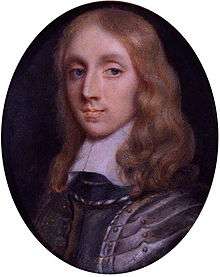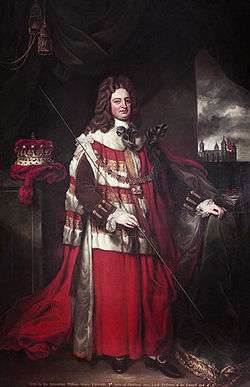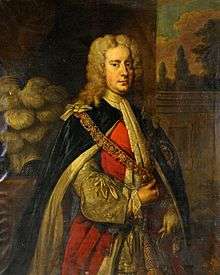Chief Ministers of England
The Chief Minister of England is a retroactive and informal title given to the various personages who ruled England on behalf of monarch, with or without said monarch's permission, prior to the government of Robert Walpole in 1721. Among them are regicides, revolutionaries and loyal subjects who among other things, created Parliament, and a few became monarchs themselves.
The "Chief Ministership," being an informal office, had many titles, sometimes none at all, and while usually a single person, could be held by groups of up to three or four. It was an extremely dangerous position, and prior to 1700, a majority of its holders lost their lives at the behest of their royal masters.
Era of Royal Favorites, Regents and Rivals (946-1649)
Until the time of Magna Carta, England was an absolute monarchy. However, starting in 946 they were generally assisted in the formal functions of government by official Ministers.
Anglo-Saxons
- 940-957: Æthelstan Half-King; so called because he had almost as much power as the king himself.
- 946-955: Dunstan, Archbishop of Canterbury; forced into exile by Eadwig 955-957
- 959-978: Dunstan, Archbishop of Canterbury; returned when Edgar became King in Mercia
- 1022-1051: Godwin, Earl of Wessex
- 1053-1066: Harold, Earl of Wessex, second son of Godwin, Earl of Wessex (the future Harold II, King of England)
Norman/Avegen rule
William the Conqueror
- 1068-1080: Odo, Earl of Kent
- 1070-1089: Lanfranc, Archbishop of Canterbury
William II and Henry I
- 1094-1100: Ranulf Flambard, Bishop of Durham
- 1100-1139: Roger, Bishop of Salisbury
The Early Plantagenets
- 1155-1162: Thomas à Becket, Archbishop of Canterbury; murdered
- 1189–1199: William Longchamp (intermittently, during the absences of Richard I on crusade, in prison, and in France.
- 1214-1219: William Marshal, 1st Earl of Pembroke; Regent of England
- 1219-1232: Hubert de Burgh, 1st Earl of Kent; Regent from 1219 to 1227
- 1263-1265: Simon de Montfort, 6th Earl of Leicester; killed at the Battle of Evesham
- 1274-1292: Robert Burnell, Bishop of Bath and Wells
- 1309-1311 Piers Gaveston, 1st Earl of Cornwall
- 1327–1330: Roger Mortimer, 1st Earl of March, Regent
- 1327–1330: Queen Isabella of France Regent (de facto)
- 1327–1330: Henry, 3rd Earl of Lancaster, Regent (de jure)
- 1330-1340: John de Stratford, Archbishop of Canterbury
- 1367-1371: William of Wykeham, Bishop of Winchester
- 1389-1391: William of Wykeham, Bishop of Winchester
House of Lancaster
- 1413-1417: Henry Beaufort, Cardinal, Bishop of Winchester
- 1422–1435: John, Duke of Bedford Regent, died 14 September 1435
- 1422–1437: Humphrey, Duke of Gloucester Regent, died 23 February 1447
- 1424-1427: Henry Beaufort, Cardinal, Bishop of Winchester
- 1432-1447: Henry Beaufort, Cardinal, Bishop of Winchester
- 1447-1450: William de la Pole, 1st Duke of Suffolk
- 3 April 1454–February 1455: Richard Plantagenet, 3rd Duke of York
- 19 November 1455–25 February 1456 Richard Plantagenet, 3rd Duke of York, Protector (Regent) for Henry VI.
- 1470-1471: Richard Neville, 16th Earl of Warwick; the Kingmaker; killed at the Battle of Barnet
House of York
- 1461-1467: Richard Neville, 16th Earl of Warwick; the Kingmaker
- 1475-1483: Thomas Rotherham, Archbishop of York
- 30 April-26 June 1483: Richard Plantagenet, Duke of Gloucester, was 'Lord Protector of the Realm' during the nominal reign of Edward V (one of the "Princes in the Tower") before claiming the throne for himself as Richard III
House of Tudor
Henry VII
- 1486-1500: John Morton, Cardinal, Archbishop of Canterbury
- 1500-1509: Sir Richard Empson, executed by Henry VIII
- 1500-1509: Edmund Dudley, executed by Henry VIII
Henry VIII
- 21 April-27 June 1509: Margaret Beaufort, Regent.
- 1514-1529: Thomas Wolsey, Cardinal, Archbishop of York
- 1529-1532: Sir Thomas More (Saint); executed by Henry VIII; canonised in 1935
- 1532-1540: Thomas Cromwell, 1st Earl of Essex; executed by Henry VIII
- July-September 1544: Catherine Parr, Queen of England, Regent.
- 1544-1547: Thomas Wriothesley, 1st Earl of Southampton
Edward VI and Jane

- 1547-1549: Edward Seymour, 1st Duke of Somerset; Lord Protector for Edward VI, who had him executed.
- 1550-1553: John Dudley, 1st Earl of Warwick; 1st Duke of Northumberland; executed by Mary I.
Mary I, Elizabeth I and James I
- 1553-1572: William Paulet, 1st Marquess of Winchester
- 1572-1596: William Cecil, 1st Baron Burghley
- 1596-1612: Robert Cecil, 1st Earl of Salisbury
House of Stuart
James I and Charles I
- 1613-1616: Robert Carr, 1st Earl of Somerset, arrested
- March 1617: Francis Bacon, Regent
- 1616-1628: George Villiers, 1st Duke of Buckingham; assassinated
- 1639-1640: Thomas Wentworth, 1st Earl of Strafford; executed by Charles I
The Commonwealth
During the "interregnum" period, the Lord Protector may arguably be regarded either as monarch or as chief minister.
| Portrait | Name | Lifespan | Term began | Term ended | Political affiliation(s) |
|---|---|---|---|---|---|
 | Oliver Cromwell Old Ironsides | 25 April 1599 – 3 September 1658 (aged 59) | 16 December 1653 | 3 September 1658 | New Model Army |
 | Richard Cromwell Tumbledown Dick | 4 October 1626 – 12 July 1712 (aged 85) | 3 September 1658 | 25 May 1659 (Resigned) | New Model Army |
The Stuart Restoration
In 1660, the leadership of the Commonwealth recalled Charles II and the chief minister became responsible to some extent to Parliament as leader of a ministry, although much of the time the King was his own chief minister. The Glorious Revolution of 1688-9 furthered this process and by the time of Queen Anne, monarchs had little choice as to who their ministers would be.
Charles II
- 1660-1667: Clarendon Ministry, Edward Hyde, 1st Earl of Clarendon
- 1667-1674: Cabal Ministry: Thomas Clifford, 1st Baron Clifford of Chudleigh, Anthony Ashley Cooper, 1st Earl of Shaftesbury (Whig), George Villiers, 2nd Duke of Buckingham, Henry Bennet, 1st Earl of Arlington and John Maitland, 1st Duke of Lauderdale
- 1674-1679: Thomas Osborne, 1st Earl of Danby (later 1st Duke of Leeds) (Tory)
William III
While the King was out of the country fighting wars and such, a council of seven Lord Justices (sometimes referred to as the "Lords Regent") took control of the country. They were: William Cavendish, 1st Duke of Devonshire (1640–1707), Charles Sackville, 6th Earl of Dorset (1638–1706), Sidney Godolphin, 1st Earl of Godolphin (1645–1712), Thomas Herbert, 8th Earl of Pembroke (1656–1733), Charles Talbot, 1st Duke of Shrewsbury (1660–1718), John Somers, Baron Somers (1651–1716), and Thomas Tenison.
Anne
1702-1710: John Churchill, 1st Duke of Marlborough As Master General of Ordnance (Tory)
"Prime Ministers" after the Acts of Union 1707
| Portrait | Name | Term of office | Ministerial offices | Political party | Ministry | ||
|---|---|---|---|---|---|---|---|
.jpg) |
John Churchill, 1st Duke of Marlborough | 1702 | 1710 | Master General of Ordnance | Tory | Marlborough/Godolphin | |
 |
Robert Harley, 1st Earl of Oxford and 1st Earl Mortimer | 1711 | 1714 | Lord High Treasurer | Whig and Tory | Harley | |
 |
Henry St John, 1st Viscount Bolingbroke | 30 July 1714 | 13 October 1714 | Secretary of State | Tory | Bolingbroke/Shrewsbury | |
 |
Charles Talbot, 1st Duke of Shrewsbury | 30 July 1714 | 13 October 1714 | Lord High Treasurer | Tory | Bolingbroke/Shrewsbury | |
"Prime Ministers" under George I
In the immediate aftermath of the death of Queen Anne in 1714, the monarchy was unable to function as the new King was in his domains in Hanover and did not know of his accession. As a stopgap, Parliament elected Thomas Parker, 1st Earl of Macclesfield Regent, or "acting king" until the new monarch arrived to take his crown. Later, George, Prince of Wales reigned as regent for six months from July 1716 to January 1717 when the King went to Hanover.
In the early part of the reign of George I of Great Britain, who could not speak English, the cabinet began meeting without the monarch present.
After the resignation of the Duke of Shrewsbury in 1714, the office of Lord High Treasurer went into commission (i.e. the function was undertaken by a group of people rather than an individual). Thus the First Lord of the Treasury came to be the most powerful minister and the prototype of Prime Minister of the United Kingdom and its dominions.
| Portrait | Name | Term of office | Ministerial offices | Political party | Ministry | ||
|---|---|---|---|---|---|---|---|
.jpg) |
Charles Townshend, 2nd Viscount Townshend |
13 October 1714 | 12 April 1717 | Secretary of State & de facto Prime Minister |
Whig | Townshend | |
 |
Charles Montagu, 1st Earl of Halifax |
13 October 1714 | 19 May 1715 | First Lord of the Treasury | Whig | ||
 |
Charles Howard, 3rd Earl of Carlisle |
23 May 1715 | 10 October 1715 | First Lord of the Treasury | Whig | ||
 |
Sir Robert Walpole | 10 October 1715 | 12 April 1717 | First Lord of the Treasury & Chancellor of the Exchequer |
Whig | ||
 |
James Stanhope, 1st Viscount Stanhope |
12 April 1717 | 21 March 1718 | First Lord of the Treasury & Chancellor of the Exchequer |
Whig | Stanhope/Sunderland I | |
 |
Charles Spencer, 3rd Earl of Sunderland |
21 March 1718 | 4 April 1721 | First Lord of the Treasury & Lord President of the Council (1718–19) |
Whig | Stanhope/Sunderland II | |
Sources
- Collier's Encyclopedia, Volume 9 Electron Gun to Fischer, p. 184-5.
- Collier's Encyclopedia, Volume 11 Germanium to Heath Hen, p. 372-3.
References
| |||||||||||||||||||||||||||||
| |||||||||||||||||
.svg.png)
.svg.png)